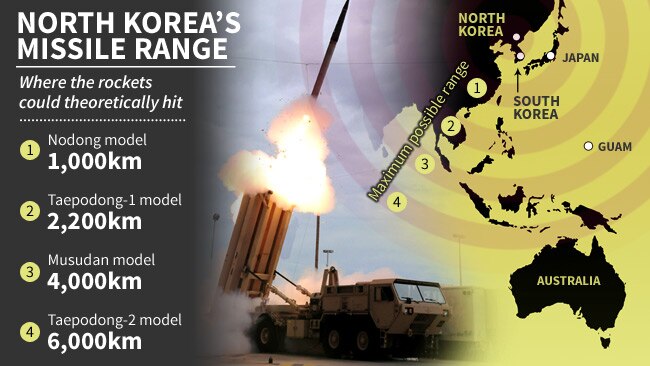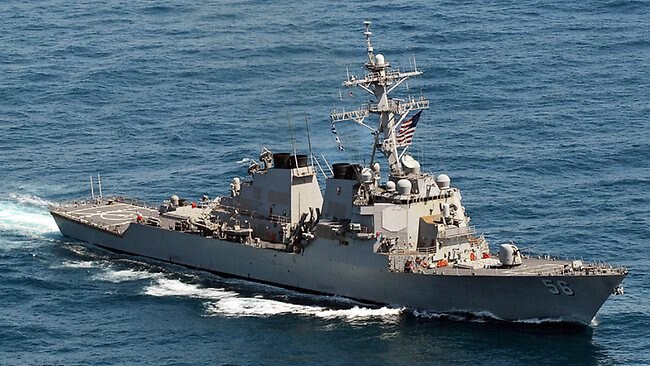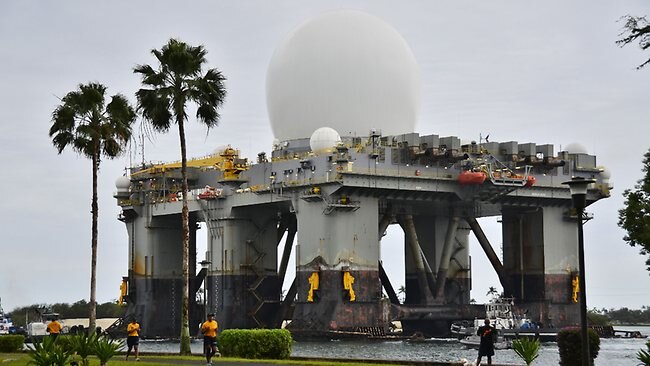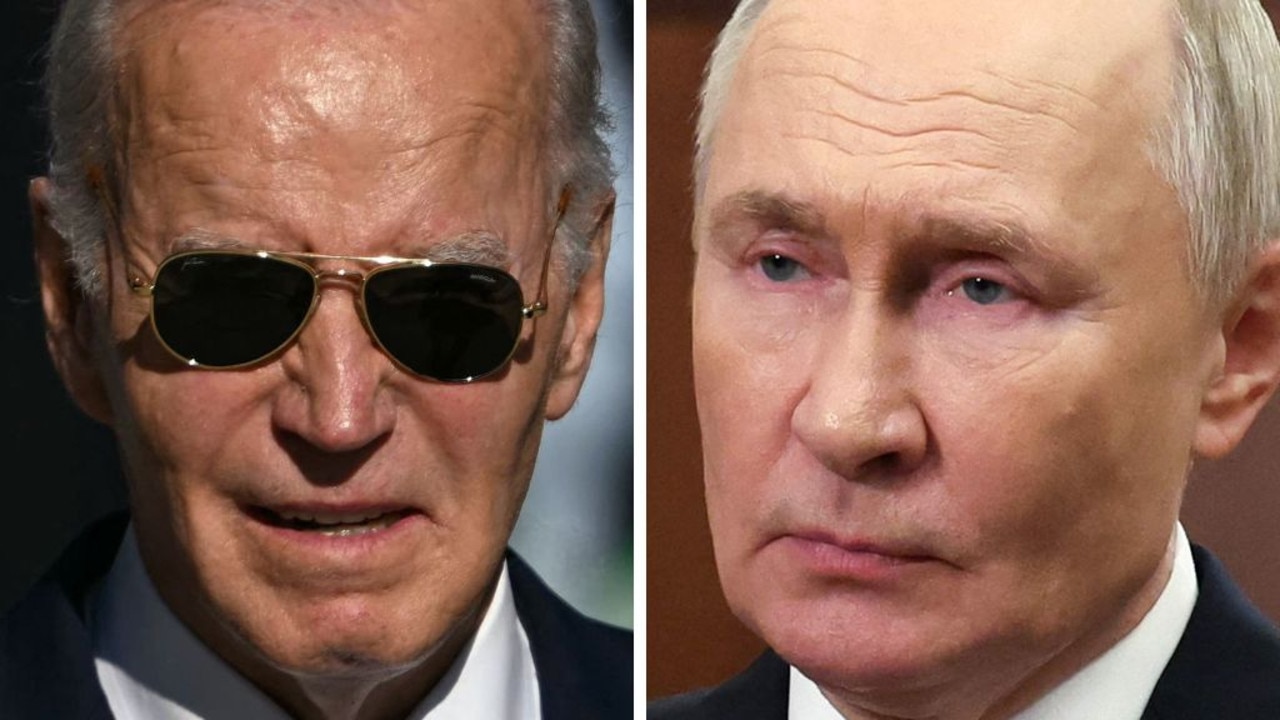North Korea seen moving missile after it declares it has given approval for a nuclear attack on the United States
NORTH Korea is reportedly gearing up to fire a mid-range missile, with a range of 4000km, on April 15 - the birthday of its founder Kim Il-sung.
NORTH Korea has reportedly been seen moving a mid-range missile into position for launch.
South Korean Yonhap news agency reports that North Korea's new KN08 Musudan missile has been spotted in the process of being transported by train towards the Sea of Japan.
It has yet to be confirmed whether the missile was carrying a warhead, but multiple sources in Seoul forecast that Pyongyang is likely to fire it off around April 15, when North Koreans celebrate the birthday of its founder Kim Il-sung.
The KN08 Musudan is still under-development and it is unclear if it has the range to reach the United States mainland. Previous assessments have given it a range of 4000km - potentially enough to reach the United States controlled island of Guam.
CLICK HERE FOR TODAY'S LATEST COVERAGE.
"South Korean and US intelligence authorities have obtained indications the North has moved an object that appears to be a mid-range missile to the east coast," a South Korean source told Yonhap news agency.
South Korea's defense ministry has so far declined to comment.
Any sign of missile movements and preparations is likely to dramatically escalate tensions.
AUSTRALIA THREAT 'REAL'
With the world on alert, experts say North Korea does potentially have the capability of hitting Australia with a missile - but only if they're very lucky.
University of NSW Professor of International Security Alan Dupont recently told defence correspondent Ian McPhedran that North Korea had only a "rudimentary" intercontinental ballistic missile system.
"The capability is pretty rudimentary and has more to do with pretence than substance," he said.
While a well-prepared missile may be capable of reaching the top-end of mainland Australia, it would not be able to hit a specific target - yet alone carry a nuclear warhead.
It also faced being shot down by the growing numbers of anti-missile systems being deployed around North Korea.
NORTH KOREA'S MISSILE THREAT TO AUSTRALIA `REAL'.
ABBOTT, RUDD SAY KOREAN THREAT SERIOUS

KIM'S CLEAR AND PRESENT DANGER
NUCLEAR ATTACK 'APPROVED'
North Korea says it has approved a nuclear attack on the United States in its latest threat as US Defence Secretary Chuck Hagel warned Pyongyang to back down. US Secretary of State John Kerry will travel to Seoul next week.
North Korea's supreme military command said in a statement this morning that The White House and Pentagon had been notified that "reckless operations'' using nuclear weapons had been approved,
"The moment of explosion is approaching fast,'' the North Korean military said, warning that war could break out "today or tomorrow''.
The General Staff of the Korean People's Army said it was formally informing Washington that US threats would be "smashed by... cutting-edge smaller, lighter and diversified nuclear strike means".
GALLERY: KOREAN TENSION INTENSIFIES.

THE THREAT THAT WON'T GO AWAY.
It would launch "merciless" military strikes on the United States, involving the possible use of "cutting-edge" nuclear weapons.
"The merciless operation of (our) revolutionary armed forces in this regard has been finally examined and ratified...
"The US had better ponder over the prevailing grave situation.''
North Korea's young leader Kim Jong-un has yet to release any statement on the current crisis.
Instead, the state's official news agency has reported their "dear respected" leader has sent a "birthday spread" to a 100-year-old woman who is "leading and optimistic life".
LOST IN TRANSLATION: NORTH KOREA'S TWEETS.

MOST EXCELLENT PICTURES OF KIM JONG-UN.
Analysts have said North Korea is not technologically capable of carrying out a strike on the US mainland but could target US troops stationed in South Korea or Japan.
The North Korean announcement came shortly after the US said it will deploy a ballistic missile defence system on its Pacific island of Guam as part of Washington's efforts to beef up its military presence in the region.
The land-based Terminal High Altitude Area Defense System (THAAD) "will strengthen defence capabilities for American citizens in the US territory of Guam and US forces stationed there,'' the Pentagon said.
The missile defense system includes a truck-mounted launcher, tracking radar, interceptor missiles, and an integrated fire control system.
Hagel called on Wednesday on Pyongyang to back down from its "dangerous rhetoric.''
"We take those threats seriously. We have to take those threats seriously,'' Hagel said at the National Defence University in Washington.
WE WILL DEFEND OUR ALLIES: UNITED STATES.

RUDD SEES CHINA SHIFT ON NORTH KOREA.
The US had taken measured, reasonable steps in response to North Korea's recent moves, he said, noting the danger of being wrong about the seriousness of the threats.
"It only takes being wrong once, and I don't want to be the secretary of defence who was wrong once,'' Hagel said.
"They have nuclear capacity now, they have missile delivery capacity now," Hagel said, calling Pyongyang's "bellicose dangerous rhetoric" problematic.
"We are doing everything we can, working with the Chinese and others to defuse that situation on the peninsula.
"I hope the North will ratchet its very dangerous rhetoric down."
JOINT INDUSTRIAL PLANT CLOSED OFF
North Korea threatened today to pull its 53,000 workers from the Kaesong joint industrial zone with South Korea and close the complex, a day after it blocked access for South Korean personnel.

A spokesman for the North's Committee for Peaceful Reunification of Korea (CPRK) said it was responding to the South Korean defence minister's statement Wednesday that there was a "military'' contingency plan to ensure the safety of South Koreans in Kaesong.
"If the South Korean puppets and conservative news media keep badmouthing (us), we will order all our workers to pull out from Kaesong'', the spokesman was quoted as saying by the official KCNA news agency.
"The full closure of the complex is set to become a reality,'' he added.
Pyongyang informed Seoul on Wednesday it was stopping the daily movement of South Koreans to Kaesong, the last real surviving point of contact between the two countries.
The South's Unification Ministry said that as of midday (5am AEDT), there were 812 South Korean citizens in Kaesong, which lies 10 kilometres inside North Korea.
The North has said the South Koreans in the complex could leave when they wanted, but hundreds opted to stay to keep their plants running. It was also reported today to have ordered all South Korean workers to leave by April 10, a report which was immediately denied by South Korea.
Speaking to South Korean ruling party MPs on Wednesday, Defence Minister Kim Kwan-Jin reassured them that there was a contingency plan, "including possible military action,'' in the event of the South's citizens coming under threat.
The CPRK spokesman said Kim was "rambling'' and warned that any military provocation against the Kaesong complex would result in the "self destruction of the enemy forces.''

Kaesong is "teetering on the verge of collapse,'' he added.
Established in 2004, Kaesong is a crucial source of hard currency for North Koreay, earning an estimated $US80 million ($A76.90 million) a year.
Neither of the Koreas has allowed previous crises to significantly affect the complex, which is the only surviving example of inter-Korean cooperation and seen as a bellwether for stability on the Korean peninsula.
North Korea last week cut the hotline with the South used to co-ordinate traffic movements in and out of Kaesong, after previously cutting another hotline between the countries' Red Cross offices on March 11.
GROWING INTERNATIONAL CONDEMNATION
Tensions have been rising since Pyongyang's third nuclear test in February led to a tightening of international sanctions against it.
The isolated communist regime has said its recent threats against the South and the US were in response to the sanctions and to recent US-South Korean military drills.
North Korea was the topic of a phone call on Wednesday between the defence chiefs of the US and China, North Korea's chief ally.
Hagel told Chinese Defence Minister Chang Wanquan that the two nations should co-operate to halt North Korea's "growing threat''.
"We've been trying to work with the North Koreans to try to persuade them it's not in their interest, and certainly not in the Korean peninsula interest... to pursue nuclear weapons,'' Hagel said.
"There is a pathway that is responsible, for the North to get on the path to peace, working with their neighbours... but they've got to be a responsible member of the world community."
Unease and irritation toward North Korea has risen internationally. Australia has condemned its "belligerent behaviour'' and said it was considering further sanctions against Pyongyang. Germany called for "utmost prudence'' from both sides and urged China to use its influence to help quell North Korean aggression.
Pyongyang said that it would restart a nuclear plant with the capacity to produce weapons-grade plutonium, after it shut down and partly demolished the facility in 2007 in return for promises of international aid.
NUCLEAR PROGRAM 'RESTARTED'
A United States research institute says North Korea has already begun construction at a shuttered plutonium reactor that it is vowing to restart and it could be back in operation sooner than expected.
Pyongyang announced its plans earlier this week, the latest in an almost daily string of threats toward the US and South Korea that have ensued since it faced international censure over its nuclear and missile tests.
The US-Korea Institute has analysed recent commercial satellite imagery of the Nyongbyon nuclear facility, where the reactor was shut down in 2007.
A cooling tower for the reactor was destroyed in 2008. The institute says rebuilding the tower would take six months, but a March 27 photo shows building work may have started for an alternative cooling system that could take just weeks.




